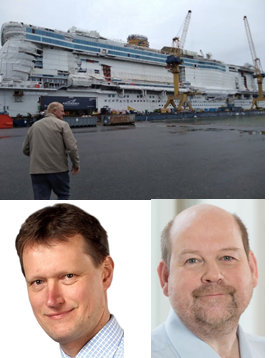
FRPM 2019, the 17th conference on Flame Retardant Polymeric Materials, brought together in Turku, 26-28 June 2019, some 220 participants worldwide. The conference showcased a wide range of R&D into novel non-halogenated flame retardant chemicals, as well as other approaches to improving fire safety of materials (barriers, reflective surfaces). Trends shown include development of PIN FRs which can react into polymers, during polymerisation or in processing, to ensure durable fire protection and avoid migration; questions about durability of FR plastics; development of recycling routes for FR plastics; and demand for PIN FR solutions to ensure durable fire safety of wood products used in construction.
The Conference included a site visit to the Meyer shipyard, Turku
The next FRPM conference will take place in
Budapest (Buda Castle Royal Gardens), 27th – 30th June 2021.
Carl-Eric Wilén, Åbo Akademi University, Finland, conference organiser, opened FRPM, emphasising the development of wood as a green and renewable polymer resource for building and other applications. This is strategic for Finland, where three fifths of the population live within 200m of the forest and a fifth are forest owners. Increasing use of wood is part of Finland’s ambitious climate commitment. Wood however is flammable, and its increasing use requires new fire safety solutions.
Bernhard Schartel, Bundesanstalt für Materialforschung und ‐prüfung (BAM), Germany, discussed flame retardant modes of action, underlining the use of understanding for evidence-based development. He compared solid phase (char forming) PIN flame retardant mechanisms, to the action of fire fighters: remove oxygen, reduce heat, remove fuel. These FRs act in polymers to store fuel in char, enclose and prevent the release into the flame of flammable gases, form a barrier layer protecting mainly from heat. However, to be effective, such FRs must be specific to the polymer in which they are used, to optimise polymer decomposition reactions and physical qualities of char formation. Solid phase PIN FRs are more effective in plastics where the char formation (pyrolysis) absorbs heat energy (engineering plastics, cellulose) rather than releasing energy (polyolefins). It was discussed whether fire testing reflects real fire conditions, and Dr. Schartel answered: “if you don’t believe it, try putting your hand in a cone calorimeter”